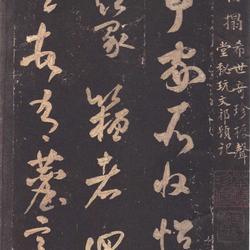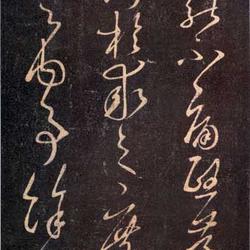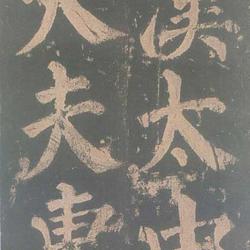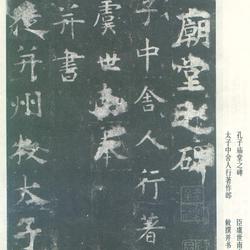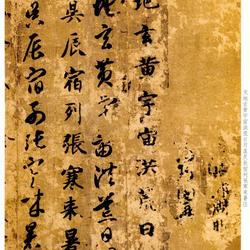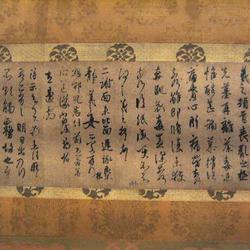The full name of "The Epitaph of Madam Dou" is "The Epitaph of Lady Dou (Mrs. Dou), the wife of the former Taizhou governor and military governor of Taizhou in the Tang Dynasty". It was established in the 11th year of Zhenguan and was unearthed in Xunyi County, Shaanxi Province in 1958.ExistingXunyi County Museum of Shaanxi Province. The epitaph cover rubbing is 59 centimeters long. The top of the cup is inscribed "Epitaphate of Dou's family, the wife of the Taizhou governor of Taizhou, the military commander of the Tang Dynasty." 15 characters, five lines, five characters in each line, Yangwen seal script, square. Boundary grid. The edge of the epitaph stone rubbing is 58 centimeters long. It has two lines of epitaph text and three or two full lines of characters, totaling 468 characters. It is in regular script with square borders and no author's name.
According to the epitaph, Lady Dou died in the sixth year of Zhenguan and passed away to her nephew in the eleventh year of Zhenguan. It can be concluded that the writing time of this epitaph should also be in the five years from the sixth to the eleventh year of Zhenguan, that is, when Ouyang Xun was 76-81 years old. However, the regular script works written by Ouyang Xun here include "Jiucheng Palace Liquan Inscription", "Zhang Chong Stele", "Wen Yanbo Stele", "Yin Fu Jing" and so on. The work is characterized by masterful brushwork, rigorous knotting and mature temperament. Although the calligraphy presented in "Epitaph of Lady Dou" is very similar to a European book, the temperament and charm of the whole text are extremely "childish" and cannot be compared with the "Jiucheng Palace Liquan Inscription" and "Wen Yanbo Stele" written here. . Whether the Epitaph of Lady Dou is a European book needs further research.
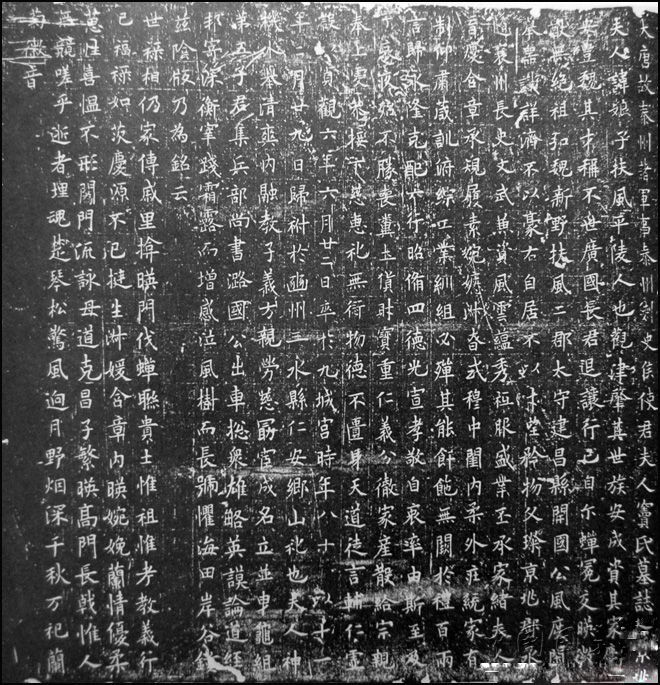
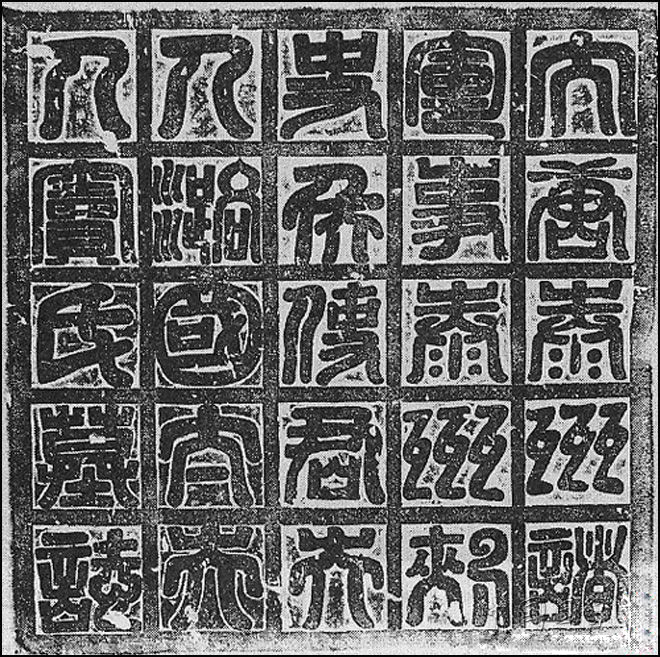
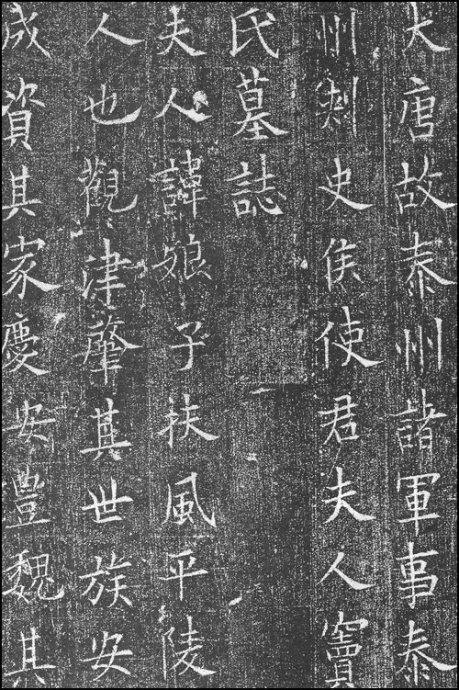
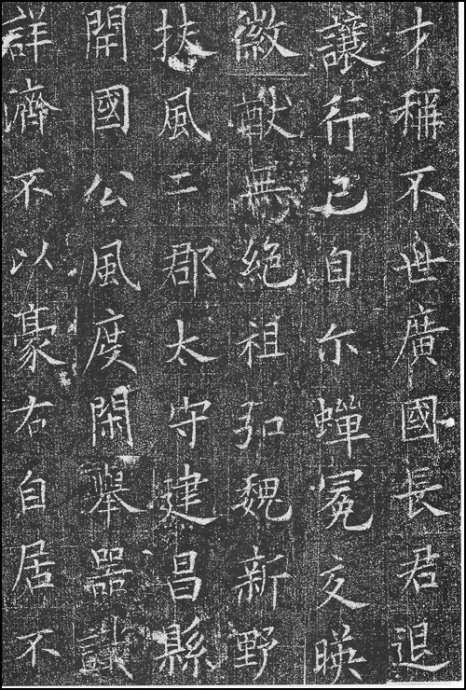
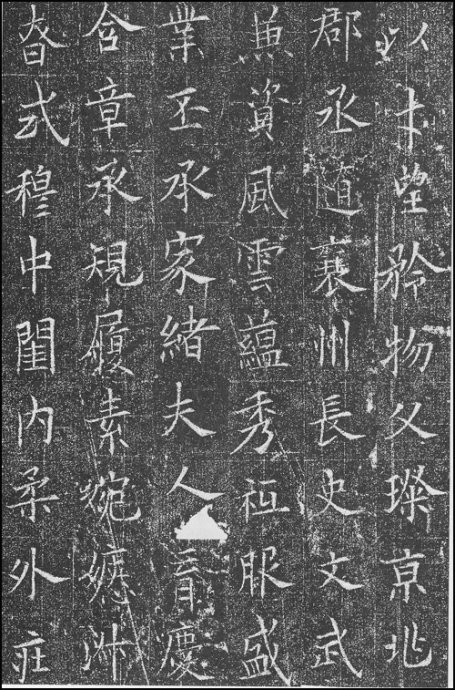
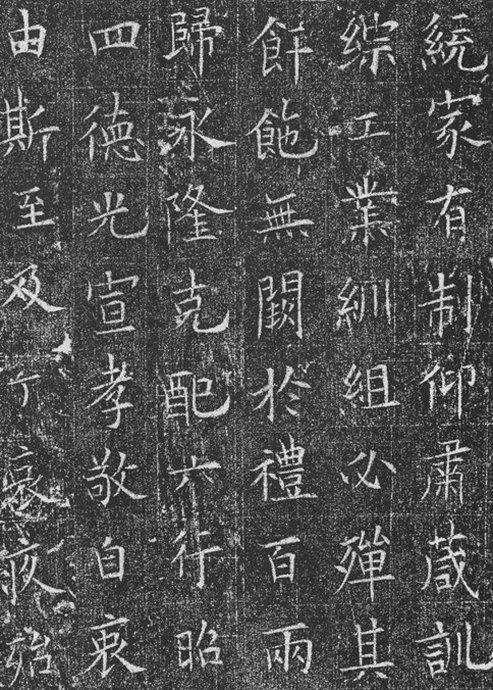
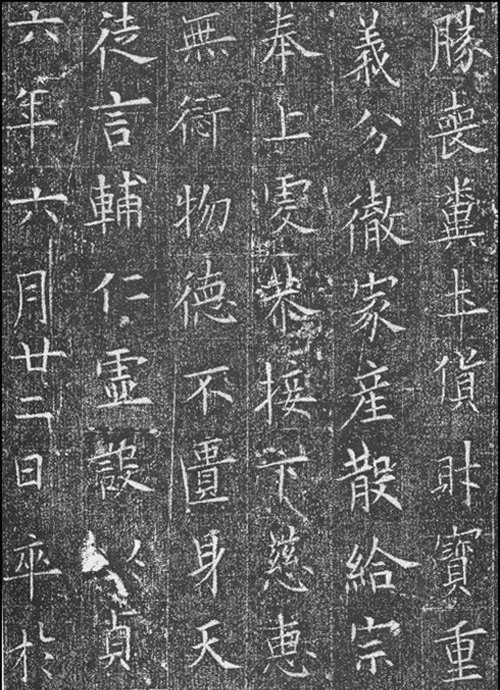
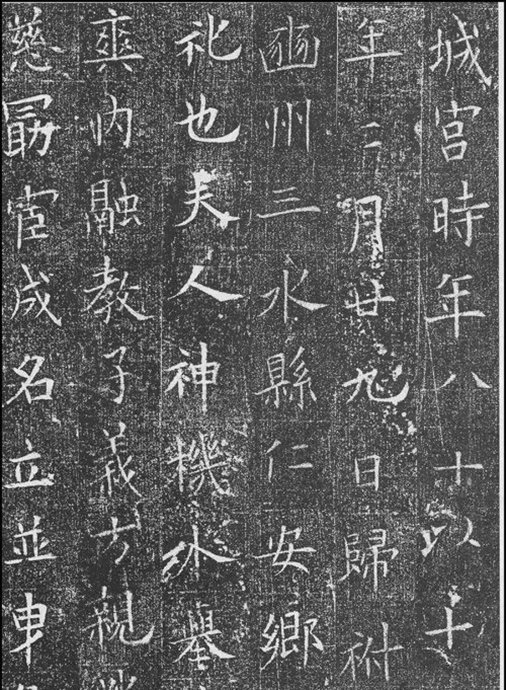
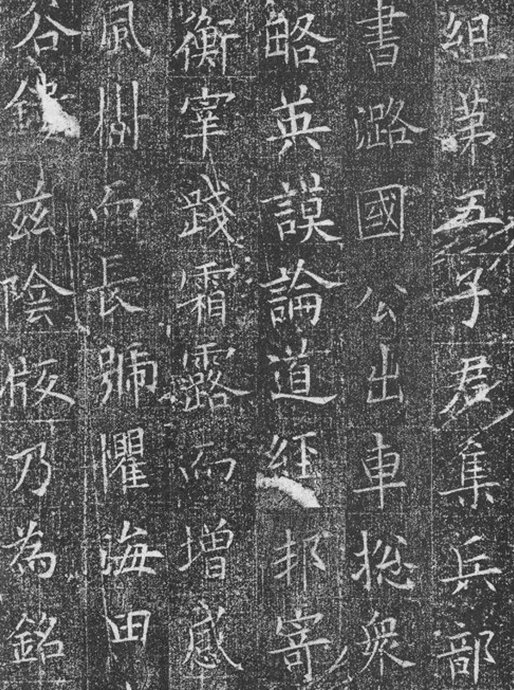
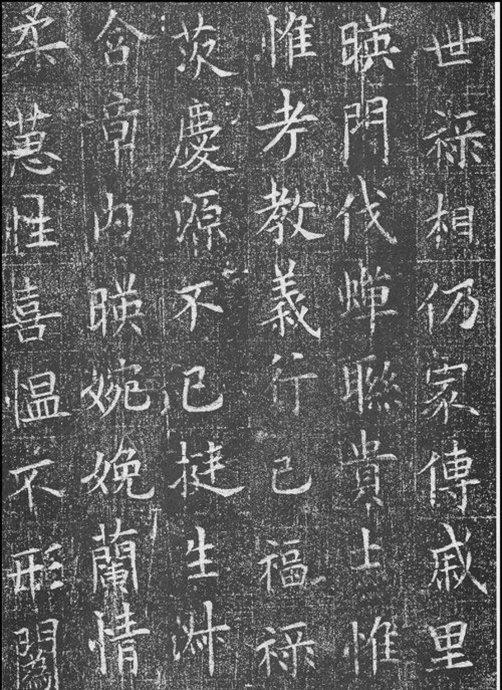
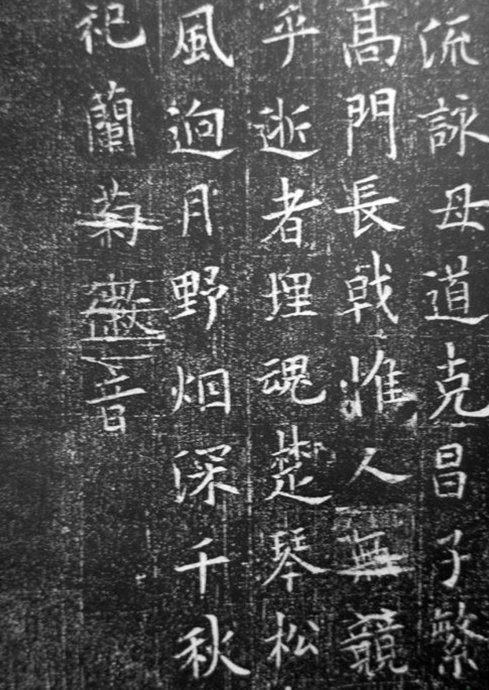
Explanation:
In the Tang Dynasty, all the military forces in Taizhou, the governor of Taizhou, the prince envoy, his wife Dou's epitaph, the lady's taboo, Fufeng, the people of Pingling, also watched Jin, Zhao, their family, An Chengzi, their family, Qing'an, Fengwei, their talents were called immortal, Guang Guo, the Changjun, gave way to himself, Erchan. The Crown Prince reflects the Huiyou Wujue Ancestor Hong Wei At the same time, he has the fortune, beauty, and clothing industry. He is the wife of the family. I have nothing to say in the gift of one hundred and two words, return to Yonglong, be married, show the four virtues, declare filial piety, sincerely lead, and Ding Ai are so guilty that I can't bear the loss of the dung, goods, treasures, benevolence and righteousness, and distribute the family property to the clan, offering it to the clan with piety and respect. Hui Li has no fault, material virtues are not lacking, he is a man of heaven, he is a man of help and benevolence, and he died in Jiucheng Palace on June 22, the sixth year of Zhenguan, at the age of eighty. He returned to Binzhou - Sanshui on February 29, the eleventh year. County - Ren'an Township Shan Liye's wife, she is a miraculous person. She is refreshing and harmonious. She teaches her son righteousness and works hard. She becomes famous as an eunuch. The state is sent to the deep, the prime minister practices the frost and dew, and the weeping wind makes the trees and the trombones fear the sea fields, the shores and the valleys. These are the inscriptions, which are inscribed in the clouds. Lu Ruci Qingyuan is still alive, Shuyuan contains the chapter, and the inner reflection is beautiful. The orchid is affectionate and soft, the nature is joyful, and the shapeless. The family flow chants the mother's Tao, Ke Chang's son (grandson). The rich reflection is the high family's halberd, but the person has no competition, and he sighs for the deceased. The soul is buried in the Chu harp, the pines are frightened by the wind, the moon is far away from the wild smoke, and the sound of the orchids and chrysanthemums is worshiped for thousands of years.
"Mrs. Dou's Epitaph"tombThe owner was Bao Niangzi, the mother of Hou Junji, the Duke of Lu State, who was the Minister of War at that time. According to Zhi Gai, she was called the Tai Madam of Lu State because of the title given by Hou Junji. Bao's ancestor Hong was the prefect of Xinye and Fufeng counties in Wei, and his father Can was the governor of Jingzhao County and the governor of Sui and Xiang Dynasties. None of them are recorded in historical records. According to the epitaph, we can know the marriage relationship between the Bao and Hou clans, and it is also known that Jun Ji's father served as the governor of Taizhou in the military affairs of Taizhou, which can make up for the historical gap. The Dou family was from Pinling, Fufeng, and claimed to be a descendant of Empress Dou, Emperor Xiaowen of the Western Han Dynasty. She died in Jiucheng Palace, Linyou, in the sixth year of Zhenguan, at the age of eighty. In the eleventh year, she returned to Xunyi, the ancestral home of the Hou family, and should have been married to the emperor from the tomb of the Hou family. Buried together with father. Hou Junji was born in Sanshui, Binzhou (now Xunyi, Shaanxi Province). In his early years, he entered the shogunate of King Qin Li Shimin with his bravery and became a general of the Guanlong Group. He served in several conquests and participated in planning. He was one of the main planners of the Xuanwu Gate Incident. After Li Shimin became Emperor Lang, he was granted the title of Duke of Lu. In the fourth year of Zhenguan, he moved to the Ministry of War. In the eleventh year, he was granted the title of Chen Guogong and paid homage to the Minister of the Ministry of Personnel. In the thirteenth year, he conquered Gaochang and was appointed as the general manager of the Jiaohe Road march. In the seventeenth year, he became a hero of Lingyan Pavilion. In the same year, he was killed for treason with Prince Chengqian. It is said that it is found in Volume 69 of "Old Book of Tang" and Volume 94 of "New Book of Tang". Zhiwen uses the word "Yinban" to refer to the epitaph, which is quite rare.
What attracts attention about the epitaph is that its calligraphy style is very similar to that of Ouyang Xun. The structure is tilted to the right, the characters are long and thin, the edges are exposed, and they are sharp and sharp, especially "Li, Guang, Ke, Jue, Ji, Jiu, Ye, Zhao". "Yi" in the characters such as "Kao, Ye, Hu, Ding" and other characters all show the special writing style of both square and round in the official script, just like "the bones are beautiful and the spirit is clear, and the forest is as dark as the spear and halberd of the arsenal". "The European style appearance is most similar in form and spirit to "Zhongni Meng's Tie", "Bu Shang's Tie", "Zhang Han's Tie", "Qianwen Tie" and "Huangfu's Birthday Stele", and it is also similar to "Zhongni Meng's Tie", "Bu Shang's Tie", "Qianwen Tie" and "Huangfu's Birthday Stele". The "Inscription on the Relic of Zen Master Yong, the Former Monk of Huadu Temple" and the "Inscription on Liquan of Jiucheng Palace" are slightly different from each other. Therefore, judging from the writing period and style, most of them show a delicate and immature appearance, and rarely have a mature and mature look, or they are not entirely comfortable due to poor imitation. For example, the character "righteousness" is too slanted, and the character "山" is vertical and "Li". "The strokes of "B" all have a soft feeling. It is suspected to be the work of a master who inherited the mantle of Ou Shu, and it is probably not the handwriting of Sui Geng (the third issue of "Calligraphy Series" in 2007 was attributed to Ouyang Xun) ). However, even so, its calligraphy is still of the highest quality in regular script of the early Tang Dynasty, and it can be used as a good copy for studying European calligraphy.

